-
Posts
164 -
Joined
-
Last visited
Content Type
Profiles
Forums
Blogs
Gallery
Events
Store
Posts posted by Norm F
-
-
Hello all,
I was hoping for some opinions on this badge which I have on hold. I think it is a mint tombak unmarked minesweeper of the same type as has been posted before, by some thought to be Juncker based on the reverse setup (but not proven). This certainly matches that type, but my question is have there ever been copies of this type and does this look genuine to more experienced eyes? The only thing that stuck out in my eye was the odd bevel to the tip of the left side of the swastika which I haven't seen before.
Best regards,
---Norm
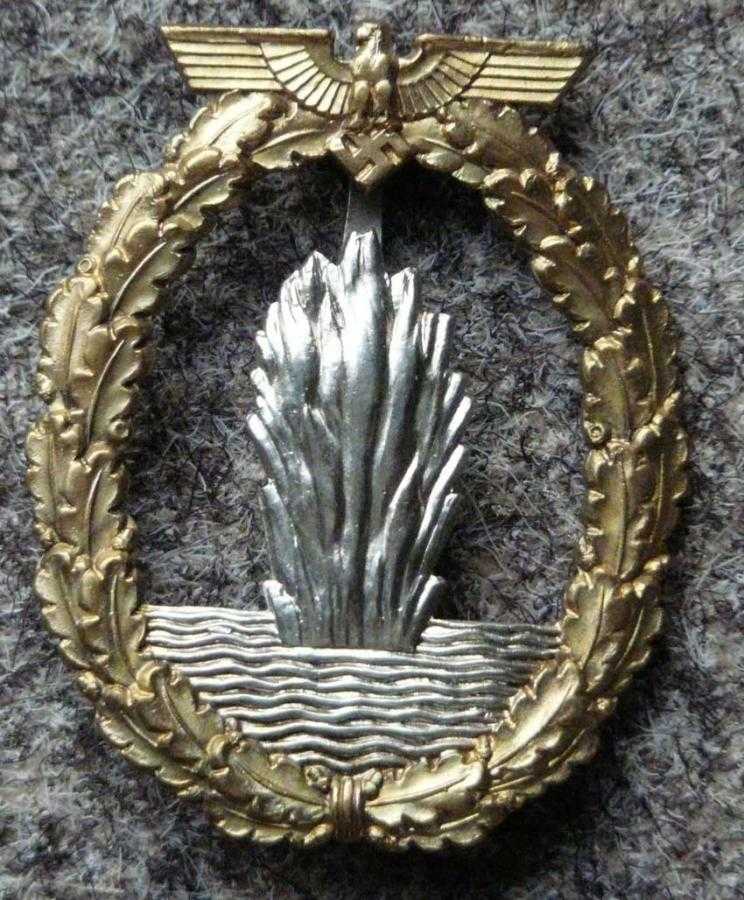 0
0 -
Officer tropical feldmütze 41.
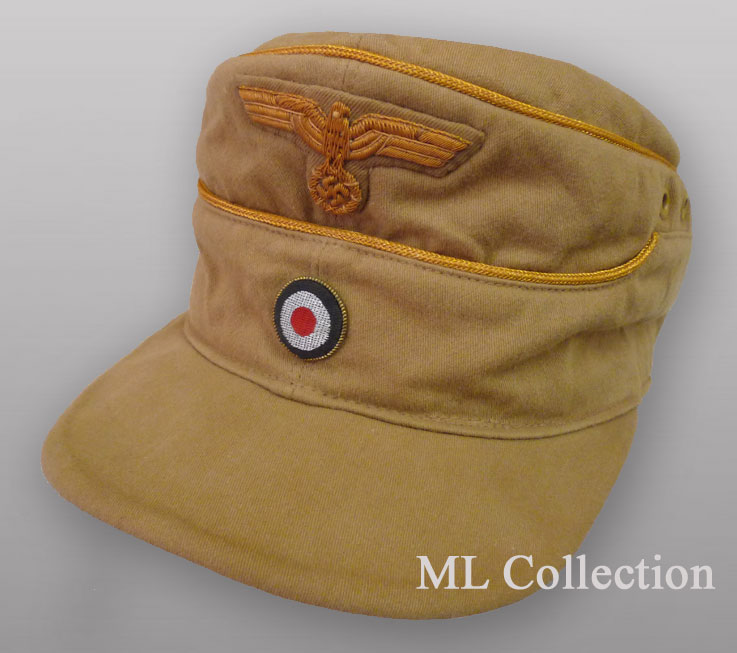
Michel, I'm intrigued by your mint tropical cap. It looks very much like the one seen here worn by my father in 1943 as an Oberleutnant in Sardinia. Notice the appearance of the eagle and the cockade.
Could you provide some more information about your cap, any markings indicating its manufacture, etc.?
Best regards,
---Norm
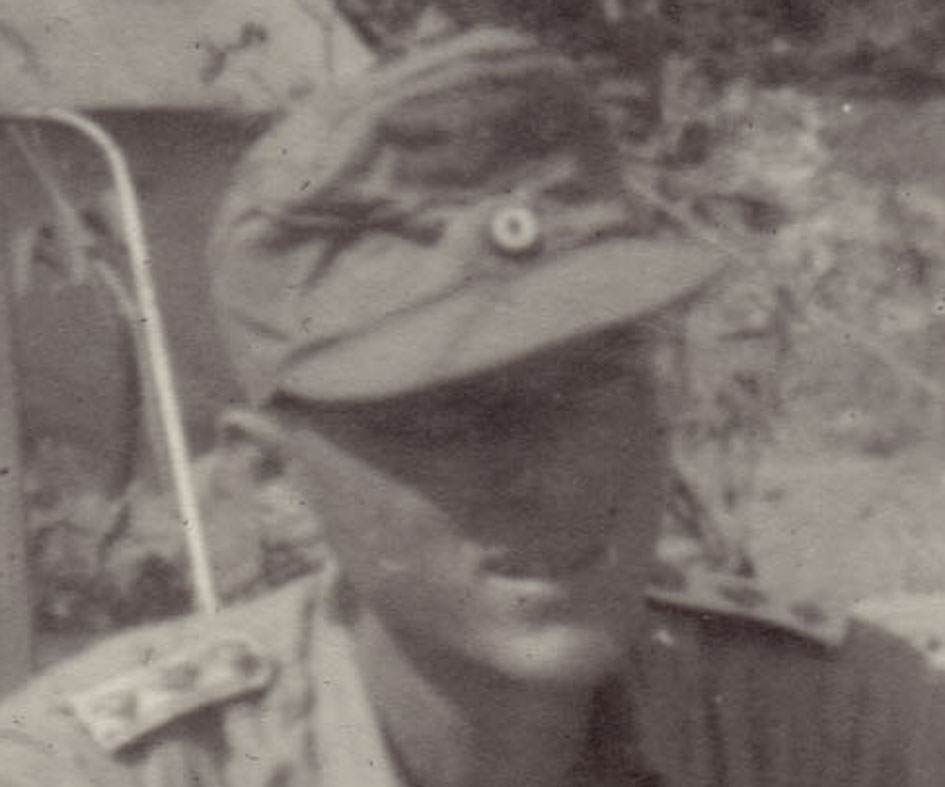 0
0 -
Looks better?
 :cheers:
:cheers: All the best
Nesredep.
Looks very nice Nesredep!

Best regards,
---Norm
0 -
Detlev/Detlef von Lehsten was born in Hamburg 14 August 1917. Joined Kriegsmarine in Crew Oktober 1937. Oberleutnant zS 01.04.42 #190. Last Rank Kapitänleutnant zS on 01.03.45 to date with seniority 18.02.45.
Check online at "U-Boat Net" because he was not a member of the MOHeV after the war so have no post-war data.
He was a watch officer on U 584 October 1942 to June 1943. Designated commander of the U-996 while it was under construction at Blohm & Voss-- it was badly damaged during the Hamburg Fire Storm air raid of 25 July 1943--possibly the greatest peril he survived during the war.
CO U 373 26.09.43-08.06.44, CO U 3508 02.11.44-30.03.45, CO U 3044 26.04.-05.05.45-- these from Rainer Busch and Hans-Joachim R¢ll, :German U-Boat Commanderss of World War II."
Wow! Excellent info from Rick Research.

Justin, your item just got a whole lot more interesting! Congratulations.

Best regards,
---Norm
0 -
Hi Justin,
I'd noticed you bought that item. I think it's fascinating! Wouldn't it be great if you could find out something about its recipient and his subsequent KM career?
I assume the holes would be to attach it to a wooden plaque? Glad it's not attached though so you could see the name on the back.
Nice addition to your collection.
Best regards,
---Norm
0 -
Just for the sake of it a basic list which might save doing some looking up.
Prasidialkanzlei Numbers.
...
17 Schwerin&Sohn, Berlin
...
38 AG MuK, Gablonz
...
54 Gebr?der Wegerhoff, Lüdenscheid
...
75 Franke&Co,Lüdenscheid
...
94 Ossenberg-Engels, Iserlohn
...
96 Robert Klein Wien
97 AE Kochert, Wien
...
115 Richard Sieper&Söhne, Lüdenscheid
...
121 Imme&Sohn, Berlin
...
133 Otto Schickle, Pforzheim
...
...
This list from Chairman is very interesting but puzzling. In other listings of PFL numbers from other sources, all of the above numbers are listed as 'unknown' whereas here there they are all assigned to various makers, including, I see, Richard Sieper as 115. (I deleted the other non-questioned numbers from the quoted list to highlight the ones in question.)
What is the reference for this list? Is there any proof for the above assignments? This would be an important question to clear up.
Best regards,
---Norm
0 -
Hi Nesredep,
Very pretty clasp. My understanding is that all of these with the ribbed fins are post-war 1957 made, and that the few late-wartime ones without the ribbing on the fins are vanishingly rare and highly reproduced.
Best regards,
---Norm
0 -
Wow! Fascinating Diver's theme collection of original material! Thanks for posting!

Best regards,
---Norm
0 -
What you are seeing are actually just holes. The space between the inner pressure hull and the outer casing is free-flooding. As the boat dives, water pours in through these holes and floods this area between the pressure hull and outer casing. When the boat surfaces, the water simply pours out of these holes again. If you search around for some images of submarines surfacing, you should be able to see the water pouring out of these vent holes.
The exact configuration of these holes can vary from type to type and even from manufacturer to manufacturer. Some of the more technicaly oriented German references actually give details of the various configurations used by each maker, though from memory I think this was just for the Type VIIs. Can't recall seeing this info for the Type IIs.
Thanks again Gordon. I can always count on you to steer me in the right direction.

Looking further I found this great thread of photos of various types of subs at http://www.subsim.co...ad.php?t=149950 from a gentleman in France.
From this it seems that the pattern of vent holes varied considerably, even within a particular model type. The pattern for IIb does in general match best, showing the seven holes like mine, and then 2 smaller holes over from there and a then another 2 fullsize, making around 11 it seems.
Much obliged.
---Norm
Edit: I spoke too soon! Looking again at the photos on that thread, it now looks these are a better match with the type IIa. The 7 vent holes at the bow and the 12 vent holes at the aft, match my photos even better than the type IIb. I now believe these to be type IIa! Interesting, that means that pre-war, several of these first run of subs were moored at Flensburg near the Naval Academy.
0 -
In that case I'd suspect it has to do with the angle of the photo, light conditions etc. The step in the forward face isn't that pronounced. From the side, it would be clearer, but on a bow-on shot it could be very deceptive. Most likely those in your photo are Type IIb, the type for which the greatest numbers were built.
Yes, I just found some photos on the internet at http://www.battleships-cruisers.co.uk/u-boats.htm that illustrate your point about the photo conditions quite nicely. In this photo of type IIb subs from 1937 you can see the step in the group shot, but in the bow shot of the U9 it's almost invisible.
I wonder also about the feature I've circled, though. Not knowing anything about how subs function, I assume these are some kind water vents that can be opened and closed? On my previous photo in this area of the bow there are seven rectangular 'holes' whereas in this group photo it looks more like 12. In the bow shot of the U9 however it looks like fewer. I wonder do these open and close, giving different appearances on different shots, and therefore rendering them unreliable as distinguishing trademarks for the different sub models?
Regards,
---Norm
 0
0 -
Hi Norm,
These are Type II boats. More specifically, they look like Type IIc in which the front face of the tower was flush ( the Type IIa and Type IIb had a stepped front). Hard to be certain as the lower part of the tower on the TYpe IIa and TYpe IIb was only slightly more prominent than the upper half. Only 8 of the Type IIc were built. Limited range and payload, so only for use in coastal waters.
Attached some drawings to show the flush /stepped tower.
Heres a scale model of a Type II so you can see her from various angles.
http://gmic.co.uk/index.php?showtopic=29451
Thanks very much Gordon!
I studied your model of the IIa with great interest, and looked at other pictures of IIa vs. IIc and you're absolutely right that it appears like a IIc with the flush front to the tower.
There's one probem however. I know for a fact that these photos were taken in early 1937 (see the ice breaking up), whereas according to what I read on uboot.net, the Type IIc u-boote were ordered in July, 1937 and built thereafter.
Here's a link to a tiny photo of the U1 on uboot.net

Although it's rather fuzzy, the front of the tower looks more flush than I would have expected.
Maybe the three u-boote in my photos are type IIa or IIb and there are variations in the tower fronts? What do you think?
Best regards,
---Norm
0 -
And finally, a view of what I assume is the bow.
Any ideas on the model, year of production, function, etc.?
Best regards,
---Norm
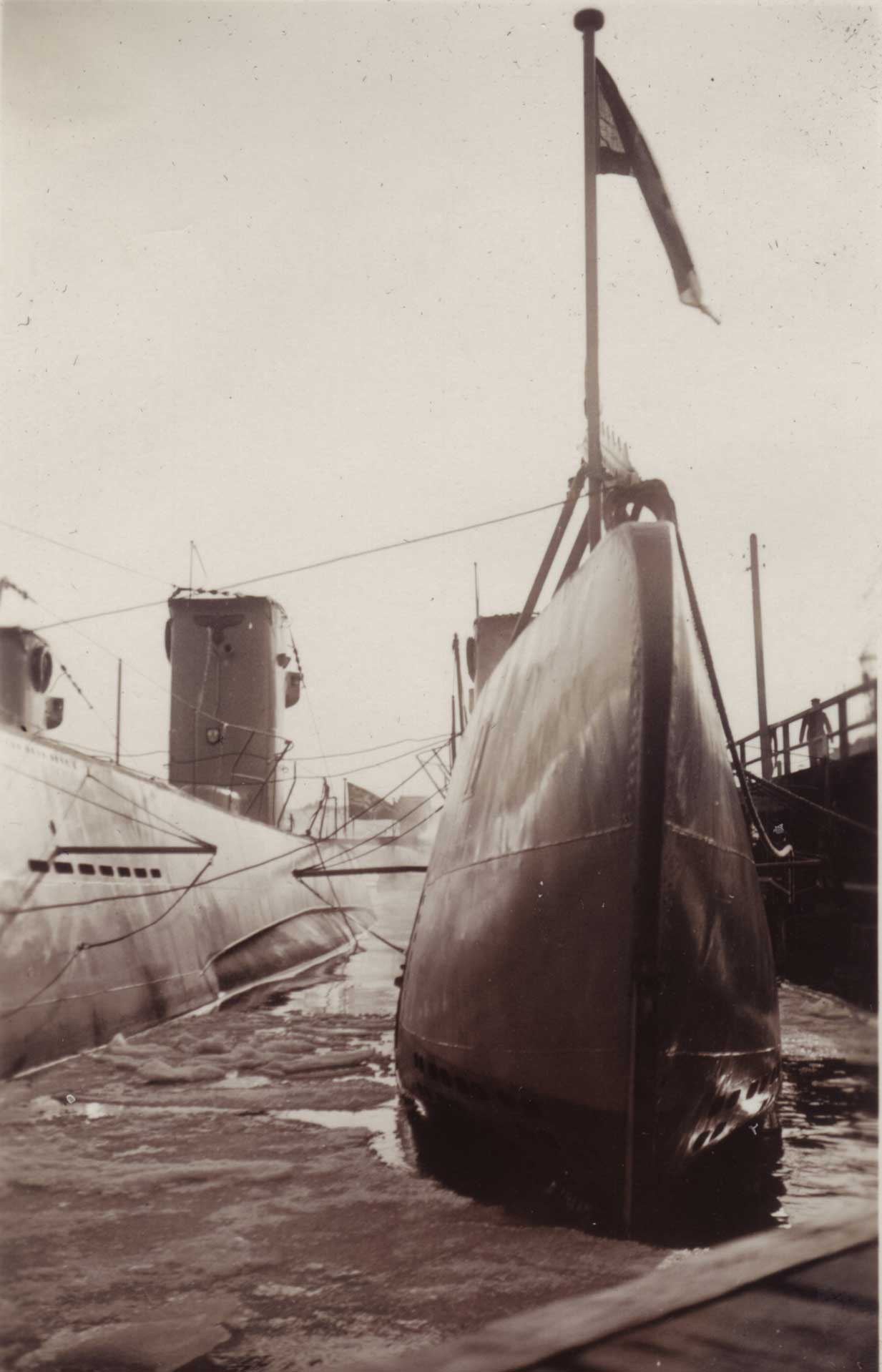 0
0 -
Hi All,
Can anyone identify the type of U-boote shown in these photos?
These photos are from 1937 in the harbour at Flensburg-Mürwik near the German Naval Academy which can be seen in the background in the upper right corner. I assume they are older training vessels since they don't match diagrams I've seen of wartime U-boots.
First, what I assume is a view from the stern?
 0
0 -
Yes, definitely Torpedoboote, but not the Raubtier or Raubvogel class which as you rightly say, had call letters rather than numbers. Another clue is in the funnels, the Raubtier/Raubvogel had a wider forward funnel and narrower aft funnel. The fact the both funnels are around the same size suggests these are left over WW1 Torpedoboats, possibly T16Mob class. The bulk of these were scrapped or otherwise disposed of after the war but I have seen reference to four modified examples of this type being commissioned between 1919 and 1921 and which presumably served in the Reichsmarine and the early days of the Kriegsmarine.
Thanks Gordon! Always a pleasure to benefit from your extensive knowledge.

I see what you mean about the funnels. And now that you point it out, when I look at the diagrams of WW1 class vessels at:
http://www.german-na...8mob/index.html
I see that on both the 1916Mob and the 1918Mob class, another distinguishing feature is the rear mast being set further back and about half the height of the front mast. In fact the 1918Mob class seems the closest match; although the rear funnel on this model is smaller than the front, the difference in width seems more subtle than on the later models, while the front and back funnels are very close in height and have the horizontal ridges. Also, it would fit with the fact that no 1918Mob examples were finished as warships, thus accounting for the lack of gun turrets on the examples in the photo.
I find it fascinating to find photographic evidence of existing variations of this sort in 1937 that are not yet well documented, at least on internet sources.
Best regards,
---Norm
0 -
Finally, this photo is pretty good view of these two presumed "T-Boote", showing their numbers 7 and 11.
So now start the questions.
Although these do look very much like the T-boot designs of late WW1 and the Reichsmarine, my understanding is ships of that era were named and had call letters, not numbers. Also I don't see any guns on the fore-decks as I would expect.
I was wondering if they could be older ships which have been modifed for training purposes for the Kriegsmarine.
Any opinions? Are there any clues here that would identify which ships they are and when they were built?
Best regards,
---Norm
 0
0 -
Here's a photo closer up to them showing a few details such as the funnel.
 0
0 -
Hello all,
Does anyone recognize this type of ship in the following photos?
Here's the background:
These photos are from the harbour (Hafen) in Flensburg-Mürwik in Schleswig-Holstein next to the old Naval Academy from 1937. At the harbour were various ships and U-boots used mainly for training purposes I believe.
My father took these photos in 1937 when attending the Marinenachrichtenschule. He referred to the boots in question as Torpedo boats when he labelled them on the back, and another member from Denmark has some similar photos from the same era and location also referring to them as T-boote.
However, as you will see these are unusual looking Torpedoboots.
First the harbour. Notice the two ships in question, moored side by side at the jetty. You can see the number 11 on bow of the front one. More to follow.
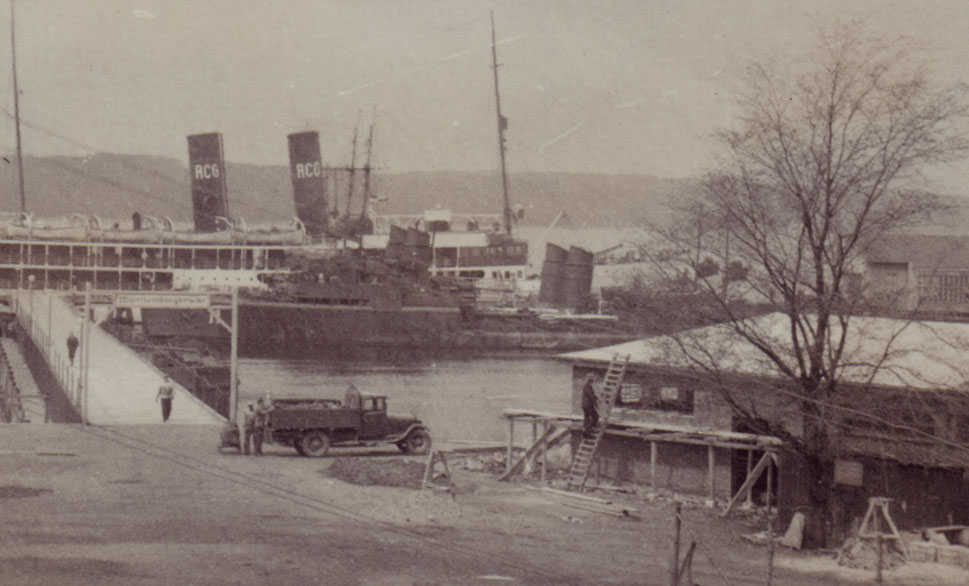 0
0 -
Thanks again Gordon!
And finally, with regards to what I've been calling a "curved crane", I believe in English this is called a tube davit, a type of simple swiveling hoist. I think the best German nautical term would be der Ladebaum although nowadays they have also adopted the English term as der Davit.
Very similar davits can still be purchased today as seen on this website: Cooney Marine . Interestingly, it seems they can be easily removed which could account for them being absent from that photo showing the view of the whole ship.
Best regards,
---Norm
0 -
Here's a new development.
I was going through some papers of my father's today and found a plastic sheet protector containing two photocopies of photos that someone must have sent him at some time (not one of his originals). One was of a Räumboot (without visible designation markings due to the waves) and the other was this photo which on careful scrutiny looks to be the Von der Groeben!

It matches closely my photo of the stern shown earlier. I don't see the curved crane however -- perhaps added at a different time or maybe it's an item that is meant to be removable? The elongated cabin added at the rear, though, matches quite well with respect to the hatches and portholes, and the taffrail is a clear match.
Assuming we're correct, this is a good example as to how extensively they would modify an old-style minesweeper for a new role as a tender in the Kriegsmarine, including amongst other things a cut down funnel intermediate in height between the M1916 and the M35 models.
Ah, the thrill of discovery!
Regards,
---Norm
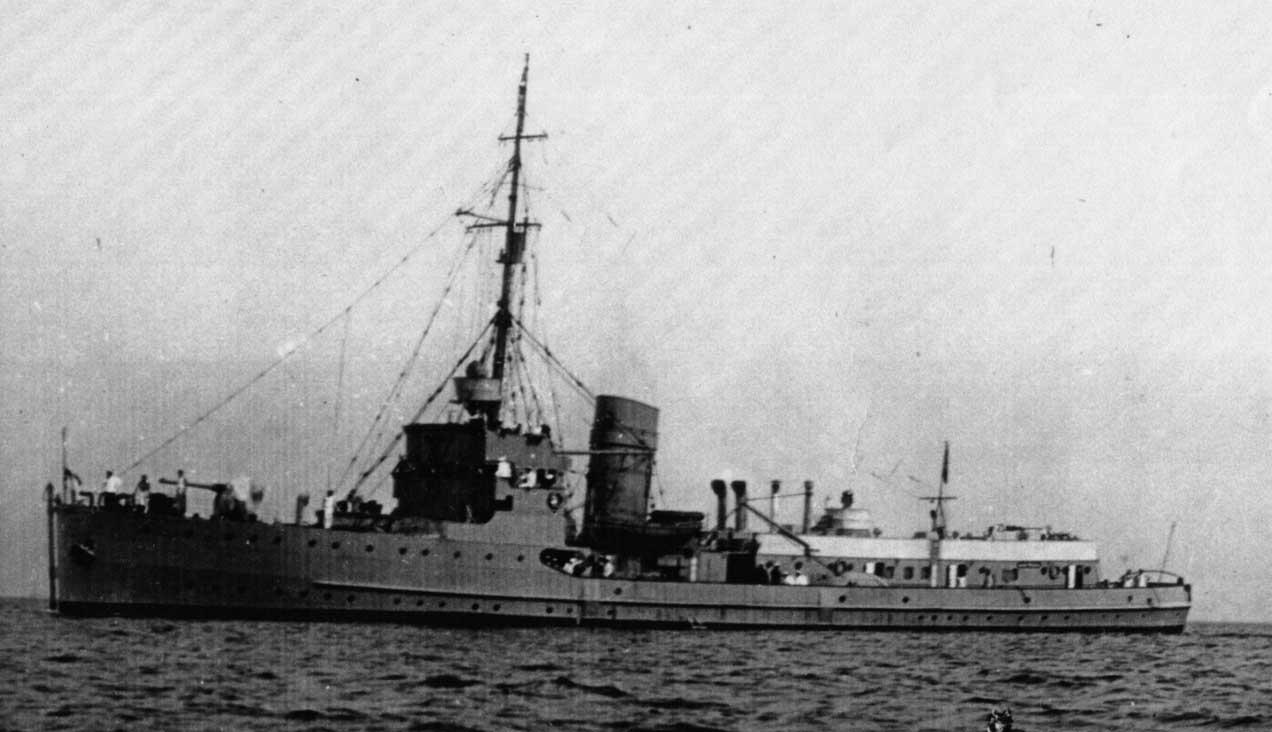 0
0 -
Very interesting artifact! Thanks for posting.
It would be great to see a photo of it after your restoration in a nice display if possible.
I'm surprised by the background in your period photos; I never thought one would see all that wooden cabinetry in a U-boot.
Best regards,
---Norm
0 -
I think there is a very high probability that the photo shows Von der Groeben.
Some factors -
The distinctive taffrail on the transom is something that none of the later Minesweeper types featured- so points to a modified earlier boat. The tall relatively narrow funnel also suggests a modified earlier type of boat.
3 R-Boot Flotille had two Tenders during its life, the Von der Groeben, then the Gazelle and the boat in the photo is definitely NOT the Gazelle.
All the other craft in the Flotilla were small Motor-Minesweeper R-Boats. so the only larger boat likely to be seen around the moorings for the Flotilla was the Tender.
Add to this that the photo of your father shows him wearing the Watch Keepers badge, and that he would not likely be on watch around a boat from a Flotilla other than his own.
All this to me points to the photo being taken alongside Von der Groeben.
Thanks very much Gordon. Your expert opinion is very much appreciated.
Every time I discover something else about my father's Navy career it's quite exciting -- unfortunately I never asked him about the details in the years when he was alive and well.
Best regards,
---Norm
0 -
All I can offer is that the railing on the stern is the taffrail in English, or Heckbord/Heckreling--I am not sure which of these is the preferred term in German.
Thanks for that!
I think I've made another breakthrough, and I'm almost certain now that my photo in post #4 is of the "Von der Groeben" -- almost sure.
I was studying further the plans of the M60 that I mentioned above, posted at http://www.dreadnoughtproject.org/plans/SM_M60_1918/.
Included there are not only the original plans of the M1916 model Minensuchboot the M60, but also the schematic of its modified version as it was later modified to become the Fleet Tender ship "Hecht". This nicely shows an example of how the Kriegsmarine might modify the old-style minesweepers for other duties. Now, if you look at the back of the "Hecht" you see a style that much more closely resembles my photo. See how now they've added a raised cabin-like area to the rear deck, on which a winch can be seen in profile. This resembles the back of the ship in my photo. The "Hecht" doesn't have the curved crane or rear FlaK gun any more whereas the "Von der Groeben" would have retained these features of the original M107 since it was still functioning as a mine-sweeper and needed the artillery it seems.
Now if only we could find another photo of the "Von der Groeben" to clinch this I'd be very happy, but the circustantial evidence so far is pretty strong.
Regards,
---Norm
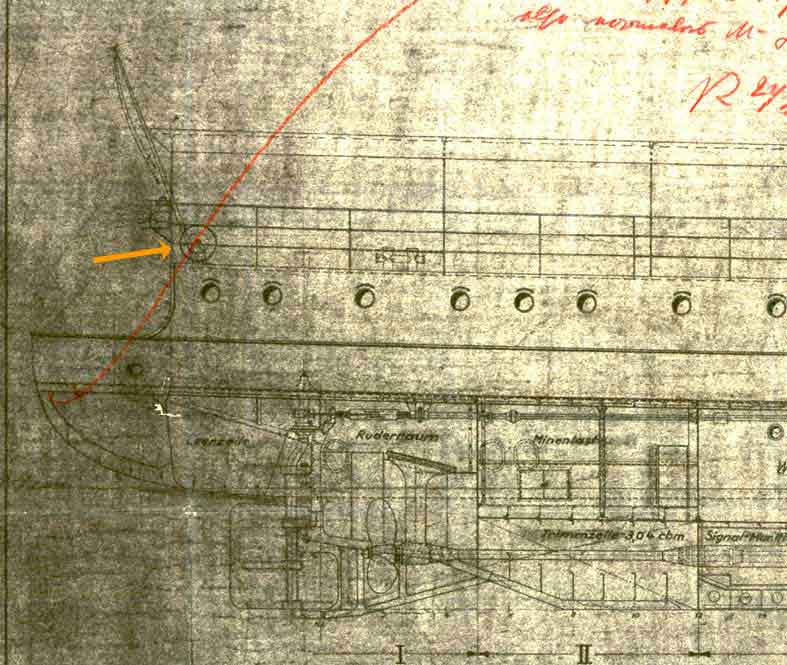 0
0 -
Now we're getting close to my question.
I have this photo of my father on watch duty in Cuxhaven from this time, and although I had seen this photo for years, it never occurred to me until recently that the ship in the background could very well be the "Von der Groeben" which is what I'm trying to ascertain. (No easy task!)
The arrows mark a curved "crane" and the "rail" at the stern similar to those seen on the previous postings. Other features of this ship don't seem typical for the M1916 Minensuchboote, but as mentioned the ship was modified in Schichau for it's current purpose, and possibly these modifications were extensive. Notably, the shape of the lower stern seems fairly vertical down to the water rather than having the "cut inward" look I'd expect on a M1916, and the funnel doesn't seem as tall, both more resembling an M35 class Minensuchboot, although it doesn't look typical for these either.
So if it's not too esoteric a question even for you Navy ship enthusiasts out there, what do you think? Is this in fact the "Von der Groeben", a modified M1916 Minensuchboot, which Funkmeister Franke is guarding so carefully?
Please comment freely.
Best regards,
---Norm
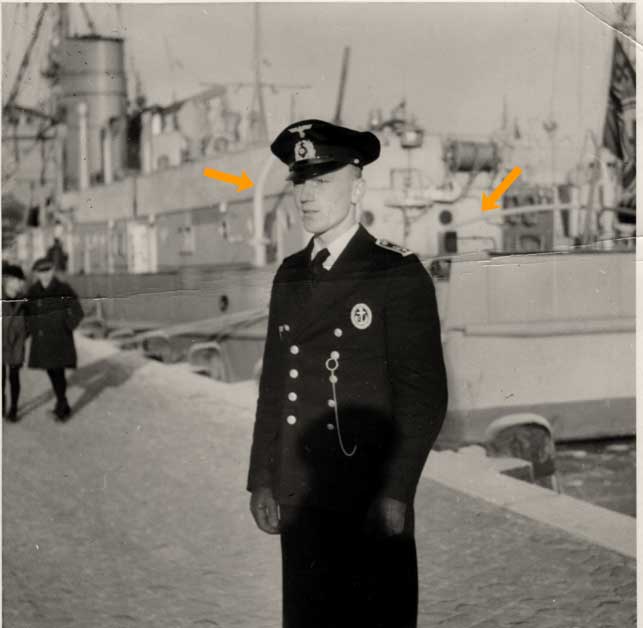 0
0 -
And here you see the curved "crane" similar to that seen in the schematic of the M1916 class Minensuchboot, as the "Von der Groeben" recovers a British mine from the North Sea for study. (Again anyone know the proper term for this item?)
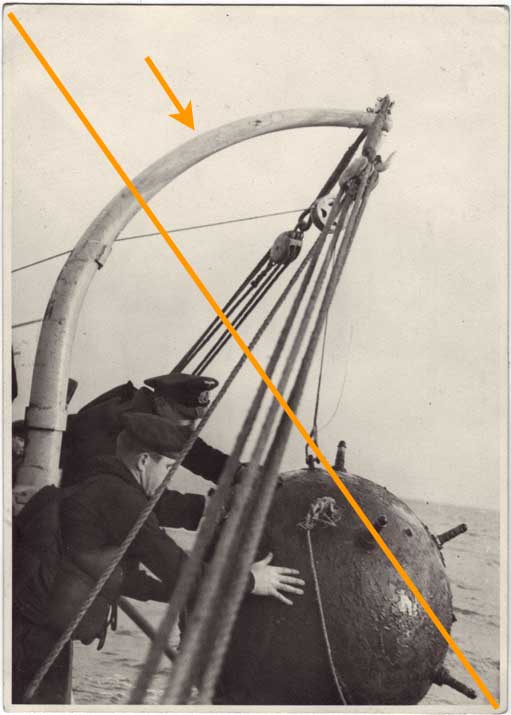 0
0




Unmarked Minesweeper
in Germany: Third Reich: Wehrmacht Medals, Decorations & Awards
Posted
Reverse.